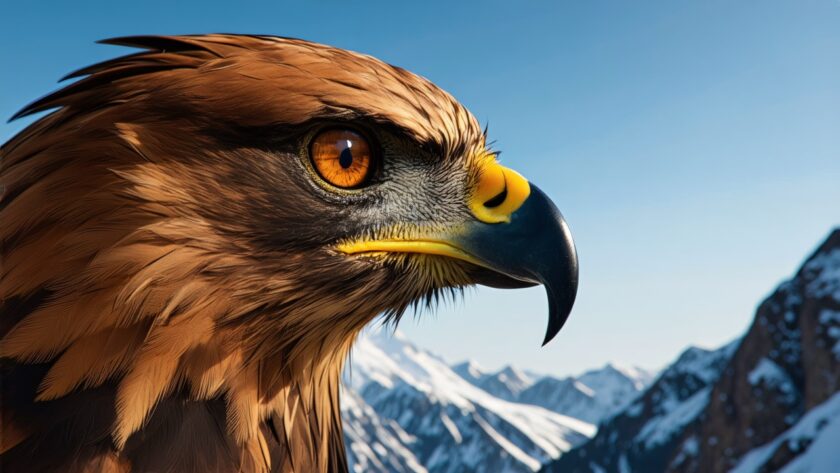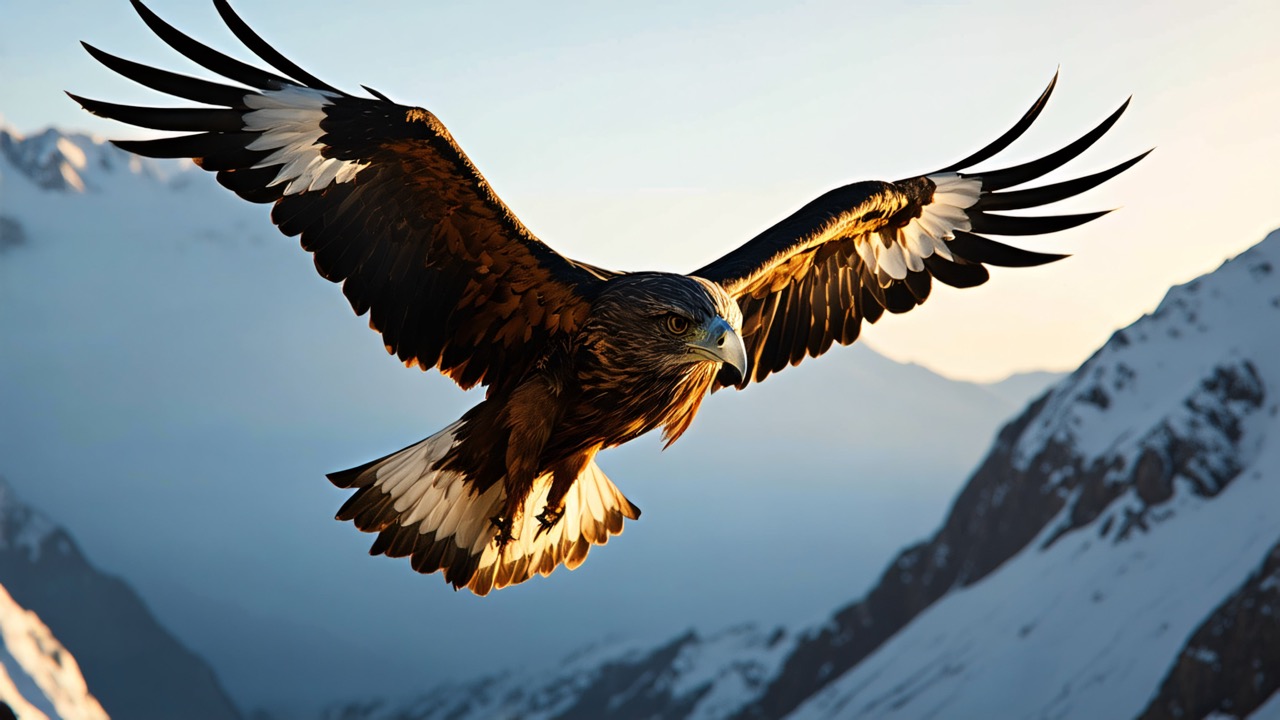The Alps, a breathtaking mountain range stretching over 1,200 kilometers, is not only a stunning natural wonder but also a critical habitat for some of the most formidable avian predators on the planet: the golden eagle and the bearded vulture. These magnificent birds have adapted to the harsh alpine environment, showcasing remarkable survival strategies and intricate behaviors that highlight the delicate balance of life in this rugged terrain.
The Golden Eagle: A Formidable Hunter
Golden eagles are renowned for their incredible hunting prowess. With a wingspan of up to 2.2 meters, these birds are capable of reaching speeds of 200 kilometers per hour during their aerial acrobatics. Their hunting strategies are as varied as the prey they pursue, which includes small mammals like squirrels and larger ungulates such as ibex. The adaptability of the golden eagle is evident in its ability to modify its hunting techniques based on the availability of prey and environmental conditions.
In late March, as winter still clings to the mountains, a female golden eagle lays her eggs in a nest that has been unoccupied for three years. The couple faces the challenge of brooding in frigid temperatures, with the male hunting to provide sustenance. The harsh alpine winter is a test of survival, where natural selection plays a merciless role. The eagle’s keen eyesight, which is eight times more accurate than that of humans, allows it to spot potential prey from great distances, a crucial advantage in the unforgiving landscape.

The Cycle of Life and Death
The cycle of life in the Alps is starkly illustrated through the interactions between predators and prey. As the golden eagle hunts, it must navigate the dangers of its environment, including the presence of other scavengers like foxes and crows. The eagle’s unique adaptations, such as deep eyebrow arches and translucent membranes, protect its eyes from the harsh winds and potential injuries while hunting.
The story of the eaglets is equally compelling. After a successful hatching, the parents must ensure the survival of their young. However, the phenomenon of siblicide—where the older sibling may outcompete the younger for food—adds a layer of complexity to their nurturing behavior. This harsh reality is a testament to the survival of the fittest, where only the strongest eaglet may thrive.
The Bearded Vulture: The Bone Breaker
In contrast to the golden eagle, the bearded vulture, with its impressive 2.8-meter wingspan, has a unique ecological niche. Known as the “bone breaker,” this vulture primarily feeds on the bones of dead animals, which constitute about 80% of its diet. The bearded vulture’s powerful digestive system allows it to consume bones that other scavengers cannot, making it an essential part of the alpine ecosystem.
The bearded vulture’s journey across Europe, Africa, and the Himalayas showcases its adaptability and resilience. After being nearly wiped out in the Alps, conservation efforts have led to a gradual recolonization of the region. These vultures are not just scavengers; they play a vital role in maintaining the health of their environment by cleaning up carcasses and recycling nutrients back into the ecosystem.
Coexistence and Competition
The interactions between golden eagles and bearded vultures highlight the intricate web of life in the Alps. While both species are apex predators, they occupy different ecological niches, allowing them to coexist. However, competition for resources can lead to conflicts, particularly during the mating season when territorial disputes arise.
As the seasons change, the challenges faced by these birds evolve. In the summer, the golden eagle must teach its fledglings the art of hunting, while the bearded vulture focuses on raising its young in the safety of high cliffs. The dynamics of predator and prey, along with the seasonal shifts, create a complex narrative of survival that is both fascinating and brutal.
The Importance of Conservation
The stories of the golden eagle and bearded vulture serve as powerful reminders of the importance of conservation efforts. With strict protections in place, the populations of these majestic birds have begun to recover, illustrating the positive impact of human intervention. The return of the bearded vulture to the Alps is a testament to successful reintroduction programs, highlighting the need for continued efforts to preserve these species and their habitats.
As we reflect on the lives of these magnificent birds, we are reminded of the delicate balance of nature. The Alps, with their towering peaks and harsh conditions, are home to incredible stories of resilience, adaptation, and survival. By understanding and appreciating the intricate relationships between these predators and their environment, we can foster a greater respect for the natural world and the importance of protecting it for future generations.
In conclusion, the golden eagle and bearded vulture are not just symbols of the wild; they embody the spirit of the Alps. Their stories of survival, competition, and coexistence offer valuable insights into the complexities of nature, urging us to recognize our role in preserving the delicate ecosystems that sustain these magnificent creatures.




